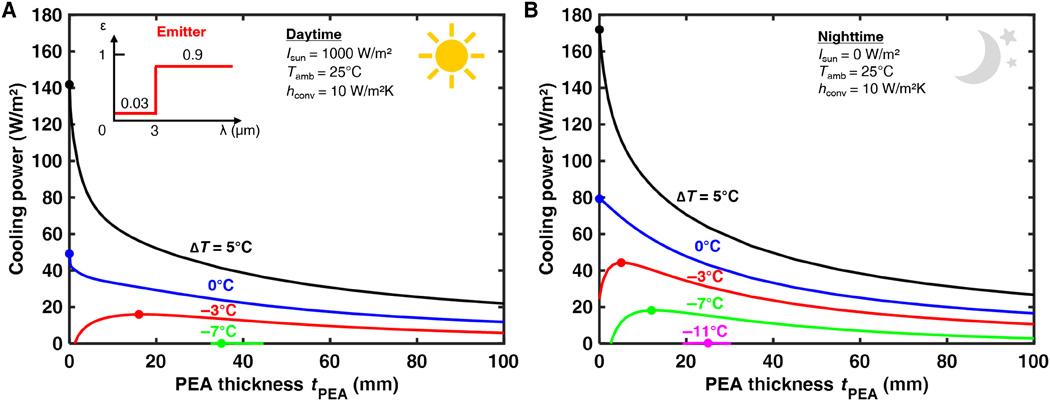High-performance subambient radiative cooling enabled by optically selective and thermally insulating polyethylene aerogel
IF 12.5
1区 综合性期刊
Q1 MULTIDISCIPLINARY SCIENCES
引用次数: 218
Abstract
Recent progress in passive radiative cooling technologies has substantially improved cooling performance under direct sunlight. Yet, experimental demonstrations of daytime radiative cooling still severely underperform in comparison with the theoretical potential due to considerable solar absorption and poor thermal insulation at the emitter. In this work, we developed polyethylene aerogel (PEA)—a solar-reflecting (92.2% solar weighted reflectance at 6 mm thick), infrared-transparent (79.9% transmittance between 8 and 13 μm at 6 mm thick), and low-thermal-conductivity (kPEA = 28 mW/mK) material that can be integrated with existing emitters to address these challenges. Using an experimental setup that includes the custom-fabricated PEA, we demonstrate a daytime ambient temperature cooling power of 96 W/m2 and passive cooling up to 13°C below ambient temperature around solar noon. This work could greatly improve the performance of existing passive radiative coolers for air conditioning and portable refrigeration applications.

光学选择性和隔热聚乙烯气凝胶实现的高性能亚环境辐射冷却
太阳能反射和隔热的聚乙烯气凝胶能够被动辐射冷却到低于环境温度。被动辐射冷却技术的最新进展大大提高了在阳光直射下的冷却性能。然而,与理论潜力相比,日间辐射冷却的实验证明仍然严重不足,这是由于相当大的太阳能吸收和发射器的隔热性差。在这项工作中,我们开发了聚乙烯气凝胶(PEA)——一种可反射太阳光(在6毫米厚时为92.2%的太阳加权反射率)、红外透明(在8至13微米厚时为79.9%的透射率)和低热导率(kPEA=28 mW/mK)的材料,可以与现有的发射器集成以应对这些挑战。使用包括定制PEA的实验装置,我们展示了96 W/m2的日间环境温度冷却功率和在太阳正午前后低于环境温度13°C的被动冷却。这项工作可以大大提高现有用于空调和便携式制冷应用的被动辐射冷却器的性能。
本文章由计算机程序翻译,如有差异,请以英文原文为准。
求助全文
约1分钟内获得全文
求助全文
来源期刊

Science Advances
综合性期刊-综合性期刊
CiteScore
21.40
自引率
1.50%
发文量
1937
审稿时长
29 weeks
期刊介绍:
Science Advances, an open-access journal by AAAS, publishes impactful research in diverse scientific areas. It aims for fair, fast, and expert peer review, providing freely accessible research to readers. Led by distinguished scientists, the journal supports AAAS's mission by extending Science magazine's capacity to identify and promote significant advances. Evolving digital publishing technologies play a crucial role in advancing AAAS's global mission for science communication and benefitting humankind.
 求助内容:
求助内容: 应助结果提醒方式:
应助结果提醒方式:


